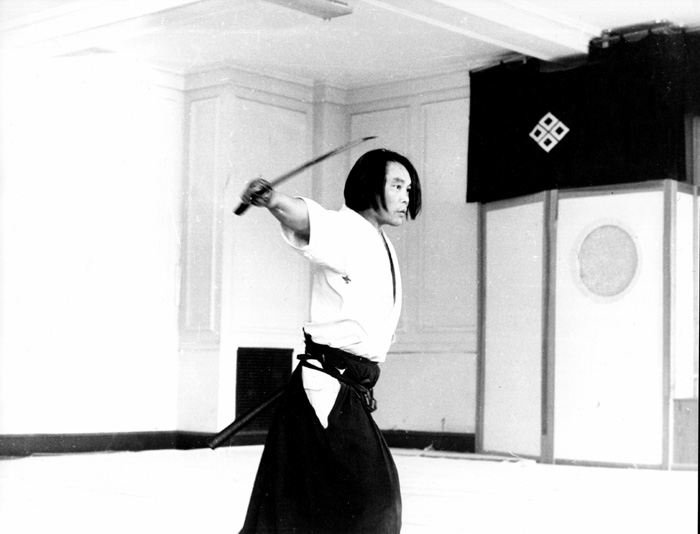Sayabiki and Angular Momentum
Sayabiki is the pulling of the scabbard (saya) when performing nukitsuke (schema), a cutting motion as you swiftly draw the sword. My Sensei often emphasizes this pulling movement during practice.
But what's the point of pulling back the scabbard? I will look at this question from a physics perspective; namely looking at angular momentum conservation.
If you've done a bit of karate, or perhaps another martial art, you're familiar with pulling the other arm as you deliver a punch. This is a similar kind of movement. When you do so, you feel as though the punch gains more speed and your shoulders stay "square".
The same is true of the tip of the sword. Doing sayabiki at the end of drawing the sword allows for greater cutting speed. Furthermore, as you reach the end of sayabiki and the scabbard slows and stops, you also help slowing the tip of the sword and allow for better control of the tip.
It has to do with the conservation of angular momentum... To explain it as clearly as possible in a written format, I'll go from momentum, to angular momentum, to its conservation, then explains how it relates to sayabiki.
Momentum
Momentum is fairly easy to grasp, as we all have an intuitive sense of it. Momentum brings mass and speed together as a single meaningful quantity. If I say something is flying very fast toward you, you would want to also know whether its heavy or not! A light object with great velocity can have a similar momentum as a heavy object with a low speed. When you catch a ball, you absorb that ball's momentum and transfer it to you, making you move backward. If you have a good posture and firm footing, you'll be able to transfer your own momentum to the earth.
Angular Momentum
Momentum can also be considered in rotation, along an axis, which we call angular momentum. It gets a bit more complicated here because, as a body turns, its parts that are further away have more speed (if you have your arms extended while you rotate, the tip of your fingers goes at a much greater speed than your shoulders). This is also tied to inertia in rotation, but I won't go there. So angular momentum is about mass and rotation, but also about how far the mass is from the axis of rotation.
Conservation of Angular Momentum
Here comes the fun part: Angular momentum is a quantity that is kept constant, conserved (video).
Let's say you are sitting on an "office chair" that can rotate freely (please try this at home) .
- Start by swinging your arms left and right, first extended, then close to your body. What happens? Your knees rotate as well, but the opposite way, and they rotate more when your arms are extended.
You started with no angular momentum. As you created some angular momentum one way in your upper body, your lower body swiveled in the opposite direction, keeping the total angular momentum at zero. - Now ask someone to give you a rotation speed, while sitting on the chair, with your arms extended, and bring your arms together (video). Your rotation speed increases noticeably.
This time, you started with a fixed angular momentum, but as you moved your arms inwards, you reduced the speed of your arms by bringing them in, and your overall speed increased as a result, keeping your angular momentum constant.
Implications for Sayabiki
The nukitsuke movement is a rotation movement of the arm and the sword. As such, it follows the laws of conservation of angular momentum. From that perspective, sayabiki has the following positive effects:
- By providing rotation in the opposite direction, it allows for greater speed of the sword arm and the sword tip.
- At the end of the movement, the slowing down of the tip (and control to avoid over-extension of the movement) is helped by the associated movement of slowing down at the end of sayabiki.
Timing is important, for the sayabiki movement needs to balance the nukitsuke movement. It is certainly possible to perform nukitsuke without doing sayabiki, but it will result in using the ground overly in order to correct rotation, leading to increased instability. Also it allows maintaining a strong "square hips" posture (this varies from school to school) associated with a better guarded attack (speed and power without too much extension of hip and shoulder).
Dear readers and fellow iaido practitioners, does this relate to your own experience? Can you think of other advantages and things to keep in mind while performing sayabiki?



